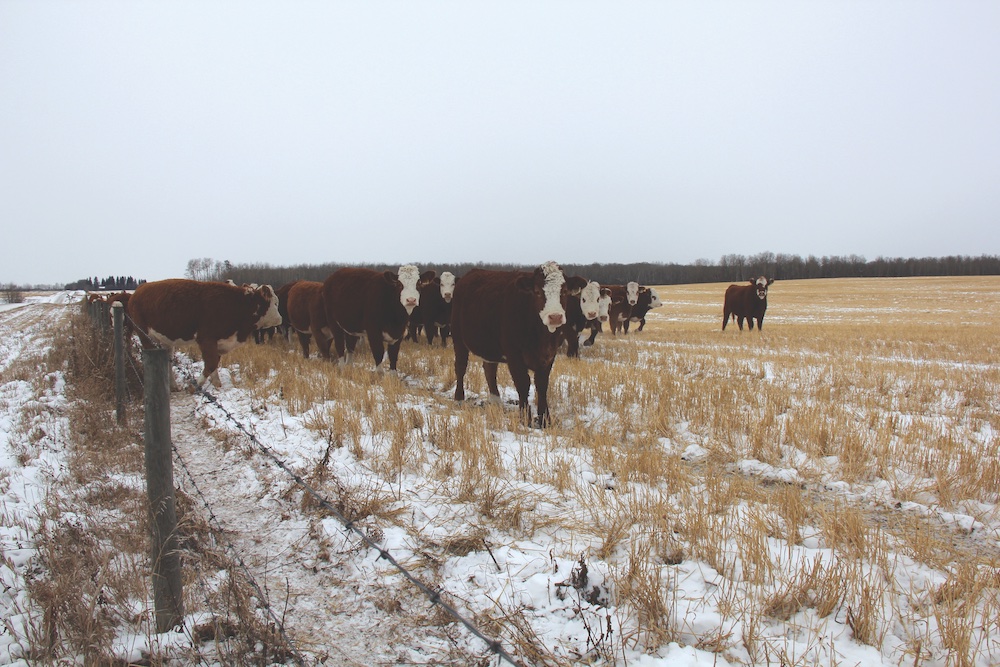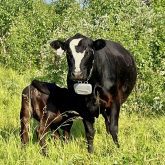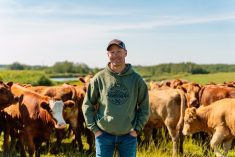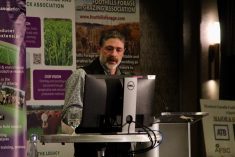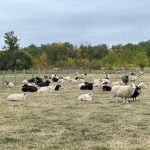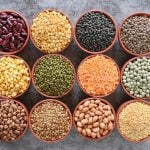When it comes to extending the grazing season, stubble grazing is a viable option for many producers on the Prairies. But what are the benefits, and what are the challenges that come with it?
Grazing the stubble left after harvest has some real advantages.
“The first thing it does is it provides additional forage that the cows can use,” says Barry Yaremcio about stubble grazing. Barry Yaremcio is an independent ruminant nutritionist and a production management consultant. He is well known for his expertise when it comes to stubble grazing.
Read Also
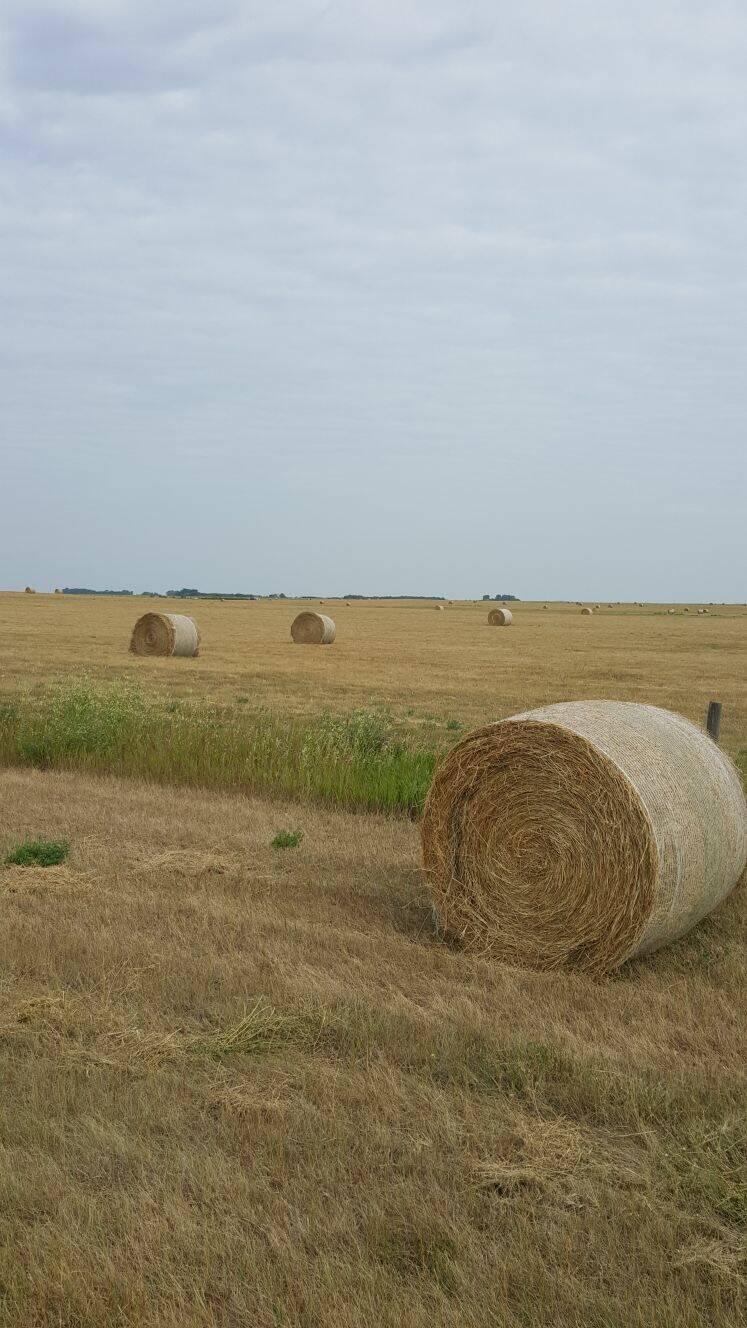
Considerations for salvaging crops for cattle feed
Salvage crops can be an option for feeding cattle, but there are a few considerations
There are other benefits, too, for both the cattle and for the land the cattle are grazing on.
“You can get up to 60 animal days of grazing per acre. So, it can be a considerable amount,” Yaremcio says. “And depending on what kind of crop it is and how well the combine is set, (the cattle) can pick a lot of grain… they can pick up a lot of leaves and get a fairly reasonable ration.”
He says stubble grazing can improve the soil quality, as well.
“When an animal drops the feces or urine on the pasture or on the field, there’s a 40 per cent improvement in nitrogen retention compared to hauling manure out from a dry lot. So you’ve got higher fertility returned back to the soil compared to taking it off the dry lot or manure pile.”
But there are challenges, as well. Yaremcio says producers should be aware of the types of cattle that are grazing stubble.
He says if a producer is fall calving or has lactating cows, they should not be stubble grazing, because there isn’t enough protein for lactating cows or growing calves. Dry cows require 25 per cent less nutrients than a lactating cow, for example.
“So, if you do want to use it for a fall calving situation, you’d have to be supplementing probably, let’s call it half of your daily feed requirement of something that is of a high quality to blend in with the stubble grazing.”
Crop types
Yaremcio says producers shouldn’t graze just any type of stubble, though. He says it’s important for producers to know which cereal straw is best for their cattle to consume.
He says barley straw and oat straw are good options because they have a decent amount of fibre and protein.
He says wheat straw is a less desirable option because it is high in fibre, but lower in protein than other straws. A dry cow requires a minimum of seven per cent protein and 55 per cent total digestible nutrients (TDN). He says with wheat straw, they would get between 3.5 to 4.5 per cent protein, and 40 to 43 per cent TDN. Barley and oat straw provide around 4.5 to five per cent protein and around 48 per cent TDN.
That nutrition doesn’t just come from the straw the cattle eat, Yaremcio says. Cattle will also consume leaves from the plants and any grain that has dropped to the ground.
Yaremcio says producers should avoid flax straw for stubble grazing because if there is any green material left after combining, it could have prussic acid present, which is more commonly known as cyanide. This is deadly for livestock.
“You can have high cyanide poison, and it does not take long for animals to die. So, for my safety side of things, I don’t even consider flax straw or stubble,” Yaremcio says.
Pea stubble has a good amount of protein but is low in calcium compared to cereal straws, so the calcium would have to be supplemented.
Yaremcio says for canola stubble, there are benefits associated with grazing the straw, but it depends on what is left behind. If much leaf is left, it will be suited to grazing. But if the combine was low to the ground, there won’t be much left for the cattle to consume that would be beneficial.
Stubble grazing won’t fulfil all the requirements of the cattle’s diet, however. It is necessary to supplement the cattle’s diet with minerals such as calcium, magnesium and phosphorus, says Yaremcio.
“You’re looking at a mineral that is probably three parts calcium to one part phosphorus and probably two to three per cent magnesium. A one-to-one mineral is definitely not adequate. It will not bring the calcium level up.”
He says producers should check whether their cattle are getting enough protein from the stubble, as they may want to supplement it. He says there are multiple ways to supplement protein, including with cubes or pellets.
“You’ve got these companies out there with cubes that are 20 to 30 per cent protein,” Yaremcio says. “Your waste is less than what you would have with a… pellet.” He says there are also other options, such as tubs or blocks, that are around 30 per cent protein.
Producers can often tell if an animal needs protein supplementation based on how the manure looks. Yaremcio says if the manure has more distinct rings than a regular patty, it often means protein levels are lower and fibre digestion is incomplete.
Considerations
Extended grazing and stubble grazing are becoming more common each year, but that doesn’t mean it is without its challenges or considerations. For producers who are looking into starting stubble grazing, Yaremcio says they should ensure they are constantly aware of the state of their cattle.
“Keeping an eye on the animals, making sure that they’re not losing weight. It’s usually too short of a period of time to see any problems with hair coat or other physical manifestations. But just keep an eye on the animals and make sure they’re doing well.”
He says producers should ensure they have a good source of water nearby for stubble-grazing cattle. He says though cattle may do okay with a water source a mile away, preferably the water source would be half a mile away.
Yaremcio also says when deciding which crops to graze, producers should be aware of ergot.
“That can cause real problems. Short-term implications of ergot toxicity being present is they’ll find about three or four days after they put the animals in, the feed intake will drop by about 25 to 30 per cent,” Yaremcio says.
“Look in the hopper and see if there’s any ergot bodies present in the hopper. Or if they want to double-check, get in behind where the combine went through, right in the centre between the wheels… and see if there are any ergot bodies lying on the ground.”


